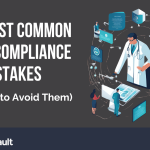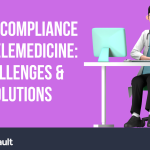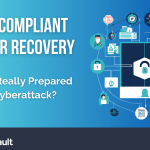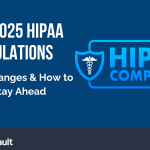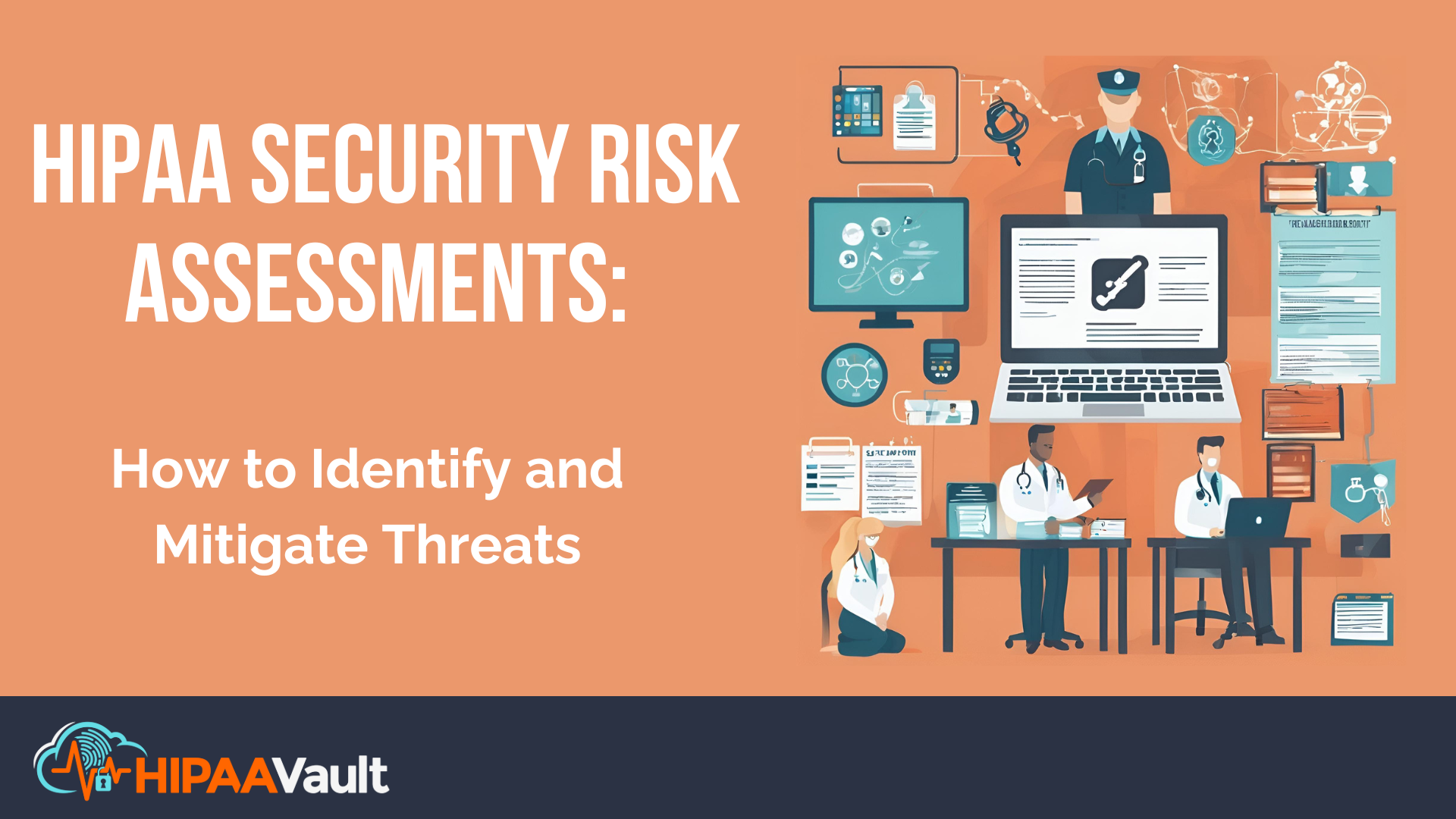
Introduction
In the last year alone, healthcare organizations have faced a record number of cyberattacks, with ransomware and phishing incidents costing millions in damages. The healthcare industry remains a prime target for cybercriminals due to the vast amount of sensitive patient data it handles. As a result, conducting a thorough HIPAA Security Risk Assessment (SRA) is more critical than ever. This essential process not only ensures compliance with the Health Insurance Portability and Accountability Act (HIPAA) but also safeguards electronic protected health information (ePHI) from potential threats. Without a structured approach to risk assessment, healthcare organizations face increased exposure to costly data breaches, legal repercussions, and reputational damage.
In this comprehensive guide, we’ll walk you through the key steps of a HIPAA Security Risk Assessment, discuss common security threats in healthcare IT, and explore effective risk mitigation strategies to keep your organization safe.
What is a HIPAA Security Risk Assessment (SRA), and Why is it Required?
A HIPAA Security Risk Assessment is a systematic evaluation of an organization’s technical, administrative, and physical safeguards designed to protect ePHI. It is a requirement under the HIPAA Security Rule (45 CFR 164.308(a)(1)(ii)(A)) and a crucial step in ensuring compliance.
The Role of SRAs in Preventing Data Breaches and Ensuring Compliance
With healthcare data being one of the most valuable assets on the black market, organizations must take a proactive approach to security. A well-executed HIPAA Security Risk Assessment serves as a foundational measure to:
- Identify vulnerabilities in IT systems, networks, and physical security measures.
- Evaluate the likelihood and impact of potential security threats.
- Ensure adherence to HIPAA’s administrative, technical, and physical safeguards.
- Mitigate financial risk by reducing the likelihood of costly data breaches and associated legal consequences.
Failing to conduct regular risk assessments can result in severe penalties from the Department of Health and Human Services (HHS), including hefty fines, loss of trust, and reputational harm.
Key Components of a HIPAA Risk Assessment
A comprehensive HIPAA Security Risk Assessment includes the following key components:
1. Identifying Vulnerabilities in Healthcare IT Systems
To ensure HIPAA compliance, organizations must conduct an extensive IT infrastructure audit to detect weak security points. This process involves:
- Assessing network security configurations to identify open ports and firewall vulnerabilities.
- Evaluating cloud storage configurations to prevent accidental data exposure.
- Analyzing third-party vendor security policies to ensure data handling practices align with HIPAA requirements.
- Reviewing software and hardware assets to identify outdated or unsupported technologies that may pose security risks.
2. Evaluating Risks Based on Likelihood and Impact
Once vulnerabilities are identified, organizations must determine the level of risk associated with each security gap. This can be done by:
- Utilizing a risk matrix to prioritize threats based on severity and potential impact.
- Implementing penetration testing to simulate cyberattacks and uncover weaknesses.
- Leveraging automated scanning tools to continuously monitor systems for vulnerabilities and compliance issues.
- Conducting employee security awareness training to reduce human error, a leading cause of data breaches.
Best Practices for Conducting a Comprehensive SRA
1. Utilize Automated Scanning Tools for Vulnerability Detection
Security professionals use advanced Security Information and Event Management (SIEM) solutions to analyze and correlate real-time security data. Some key tools include:
- Intrusion Detection Systems (IDS) to detect unauthorized access attempts.
- Encryption analysis to verify proper data protection mechanisms are in place.
- Endpoint detection and response (EDR) tools to monitor suspicious activity at the device level.
2. Engage Third-Party Security Experts for Unbiased Audits
A third-party HIPAA security audit provides an external perspective on an organization’s risk posture. Engaging security experts helps:
- Identify gaps that internal teams may overlook due to familiarity bias.
- Validate existing security controls and suggest improvements to strengthen defenses.
- Ensure compliance documentation is accurate and up to date for regulatory inspections.
Common Security Risks in Healthcare IT
1. Insider Threats
One of the most overlooked risks in healthcare security is insider threats. Employees may intentionally or unintentionally compromise sensitive patient data. Common insider threats include:
- Unauthorized access to patient records.
- Use of personal devices to store and transmit ePHI.
- Lack of awareness regarding phishing and social engineering attacks.
Mitigation: Implement role-based access controls (RBAC), enforce mobile device management (MDM) policies, and conduct routine security training.
2. Phishing Attacks
Hackers often use social engineering tactics to trick employees into revealing login credentials or clicking malicious links.
Mitigation: Deploy multi-factor authentication (MFA) and conduct frequent phishing simulations to train staff.
3. Misconfigured Cloud Storage
Poorly configured cloud databases can lead to massive data breaches, exposing thousands of patient records.
Mitigation: Enforce strict access controls, enable data encryption, and regularly audit cloud configurations.
4. Weak Authentication Policies
Using default or weak passwords leaves organizations vulnerable to brute-force attacks.
Mitigation: Require complex passwords, enforce periodic password changes, and implement zero-trust security models.
How to Mitigate HIPAA Security Risks
1. Implement Proactive Monitoring and Real-Time Alerts
Organizations must adopt continuous monitoring strategies to detect threats before they escalate. This includes:
- Deploying HIPAA-compliant managed security services to monitor and respond to security events in real-time.
- Leveraging threat intelligence platforms to stay ahead of emerging cyber risks.
- Establishing incident response plans to mitigate the impact of security breaches.
2. Enforce Strict Access Controls and Security Policies
- Implement zero-trust architecture to limit access based on user roles.
- Conduct regular security awareness training to reinforce best practices.
- Regularly audit third-party vendors to ensure they comply with HIPAA standards.
Conclusion
A well-executed HIPAA Security Risk Assessment is essential for protecting patient data, avoiding costly penalties, and ensuring compliance with HIPAA regulations. By proactively identifying vulnerabilities and implementing robust security measures, healthcare organizations can stay ahead of emerging cyber threats.
Next Steps for Organizations to Strengthen Risk Management Efforts
✅ Conduct an annual HIPAA Security Risk Assessment ✅ Invest in managed security services to enhance monitoring and response ✅ Stay updated on the latest HIPAA compliance guidelines and security threats
For expert assistance in securing your healthcare IT infrastructure, contact HIPAA Vault today!

